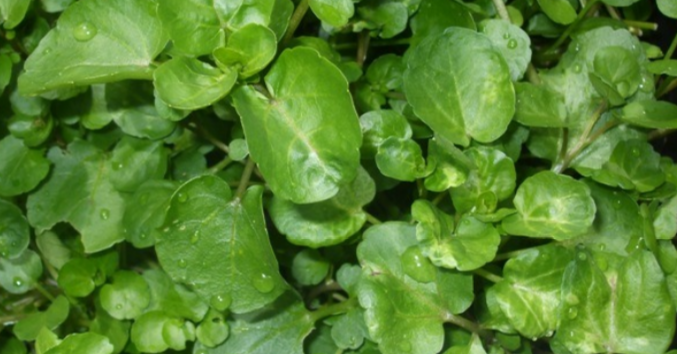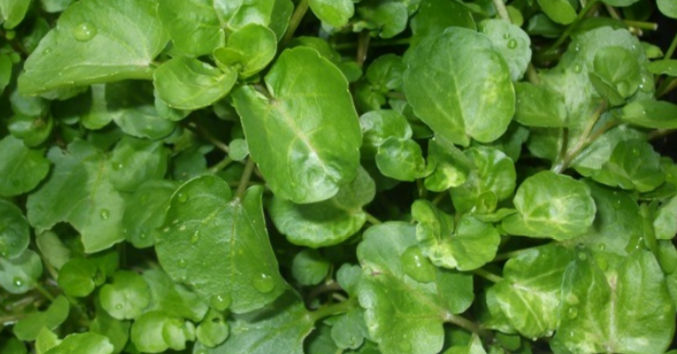Watercress
Watercress
Packet Size: 500 seeds
Couldn't load pickup availability
Think fresh, zingy watercress is only for crystal-clear streams? Think again. You can easily grow this peppery, nutrient-packed green at home—whether in tubs outdoors or on a sunny windowsill.
No fancy water features needed. Just your seeds, some simple containers, and our easy-to-follow guide (see below) to help you harvest fresh watercress all year round.
Not only is it great for your kitchen, but growing watercress outdoors can also support local wildlife—from pollinators to pond visitors.
Add a burst of fresh, peppery flavour to salads, sandwiches, soups, and more—grown by you, whenever you want it. Ready to get growing?
🌱YOUR WATERCRESS GUIDE
Grow indoors or out and enjoy fresh, peppery greens all year round.
WATERCRESS OUTSIDE (April–September)
Make a mini water garden – you’ll need:
- A large watertight container (an old washing-up bowl works well)
- Smaller plant pots to sit inside it
- Some stones or gravel for the base of each pot
- Potting compost mixed with a little lime
- A sunny spot with some shade in the afternoon
To get started:
- Put a layer of stones in the bottom of each pot and fill with your lime-enriched compost.
- Stand the pots inside the larger container and fill the outer container with water to halfway up the pots. The pots don’t need to be submerged – just sitting in water.
Sowing:
- Wait until the compost is fully moist.
- Sprinkle seeds on the surface and lightly cover.
- Early in the season, cover with clear plastic or a cloche to help germination. Remove once sprouted, and only use again on chilly nights.
Aftercare:
- Change the water every 2–3 days (more often in hot weather).
- Keep the pots sitting in water at all times.
Harvest:
- Ready in 8–10 weeks.
- Sow a new batch every month for a continuous crop.
WATERCRESS INSIDE (All year round)
You’ll need:
- A shallow tray or dish that fits on your windowsill
- A smaller tray with holes in the bottom to sit inside
- Multipurpose compost
How to grow:
- Fill the smaller tray with compost and soak it well.
- Sprinkle seeds on top.
- Place this tray inside the larger one with a bit of water at the base to keep it moist.
- Cover with a clear plastic bag and leave on a sunny windowsill.
- Remove the bag once seeds germinate.
- Change the water in the tray every day.
The yummy bit:
- Snip when they reach about 5cm tall.
- You might get a second crop if you leave around 2cm of stem to regrow.
- Sow a new batch every month for a continuous crop.
📌USES
WILDLIFE FRIENDLY
Watercress grown outdoors does more than feed you — it quietly supports garden life in simple, often overlooked ways. Even in small spaces, it can help wildlife thrive.
Pollinators and Flowers
- Bees and hoverflies visit the small white flowers if you let a few plants bloom.
- Adding stones in your water container creates a safe drinking spot for pollinators on hot days.
- Leaving some plants to flower supports pollinators later in the season — just harvest the rest before they get tough.
Shelter and Habitat
- Damp, shady spots around your pots provide shelter for lacewings, ladybirds, and other beneficial insects.
- Frogs and toads may use the moist environment as a resting place.
Water Visitors
- Larger containers of standing water can attract pond skaters, water beetles, and other small aquatic life.
- Moisture-loving insects drawn to your watercress setup may also attract small birds looking for food.
EDIBLE
- Watercress adds a sharp, fresh bite to many dishes:
- Toss fresh leaves into salads for an instant flavour boost.
- Layer in sandwiches for peppery crunch.
- Stir into soups just before serving for a nutritious zing.
- Use as a garnish to brighten up cooked meals.
Because you grow it yourself, your watercress will always be fresh, tender, and free from unwanted chemicals—making it a delicious and healthy addition to your kitchen.
Ready to grow?
Order your seeds today and enjoy fresh, home-grown watercress that’s good for you and your garden.

Collapsible content
Sowing
- Jan
- Feb
- Mar
- Apr
- May
- Jun
- Jul
- Aug
- Sep
- Oct
- Nov
- Dec
Harvesting / Flowering
- Jan
- Feb
- Mar
- Apr
- May
- Jun
- Jul
- Aug
- Sep
- Oct
- Nov
- Dec

